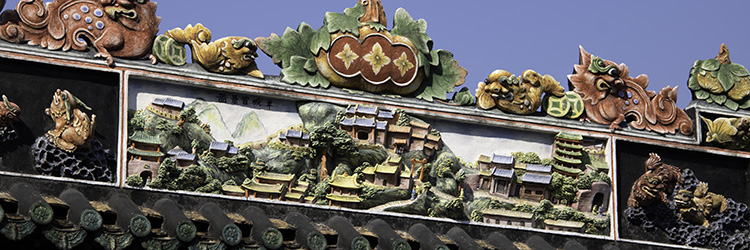The Guangdong Folk Art Museum in Guangzhou contains a wonderful collection of artwork and information on the various art styles that China is known for. It's located inside the Chen Clan Ancestral Hall, which is an important heritage site. The building's architecture is the famous and well known a style of the Qing dynasty.
The rooms have wide open doors and tall ceilings. Not exactly a place that’s easy to heat in the winter. It’s difficult to imagine people living in houses like these. It feels very ancient and Chinese.
Stucco Relief
One of my favorite architectural designs in China are the relief sculptures that line the tops of old buildings and temples. Colorful depictions of animals, dragons, and landscapes. Some are faded and all of them are up high along the roofs. Difficult to appreciate without craning your neck.
Something about the 3D and texture draws me to admire these. It's just so different from how the Western world adorns buildings.


These sculptures are on the front facing side of the building. Some of the ones in less visible locations are not as well cared for. Faded and dirty, covered in mildew.
"Stucco relief is another decorative scheme widely used on Lingnan architecture. The works are made on site from start to finish... ...The main material is lime, to which is added straw or paper pulp. The mixture is applied to the armature, hand-built into shape, dried, and more layers added. The final stage is applying of colours to the figure. The finished product is robust and weather-proof, making it highly suitable to withstand the hot and humid climate of south China." - Sign at Museum
Ivory Carving
The ivory carving here is some of the most intricate artwork I’ve ever seen. Sections of tusk have been carved to look like lace. It’s impossible to see any seams. How the giant structures are held together is beyond me. Many of the cavings follow the shape of the tusk. Some are ivory dioramas, using the shape of the tusk as the landscape horizon. Others are devoid of tuskular shape.
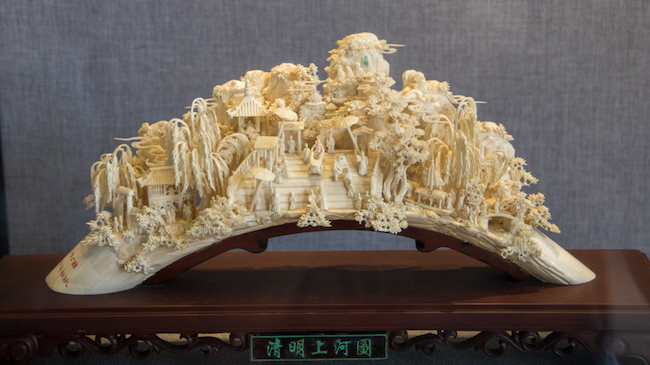


(The above photo is probably the most impressive ivory carving I’ve seen. The first one I saw in China, though, was a mammoth sized mammoth tusk at a Hotel in Macau. It must have been 4 or 5 feet long and at least 3 feet tall.)
It’s interesting to note some of these cavings are as recent as 2004, so through some means or another they are preserving their ability to carve ivory.
Wood Carving
The wood carving’s here range from “that looks neat” to “how the crap is that even possible?” The best piece they have on display is a seven foot tall woodcarving completed in 1998.

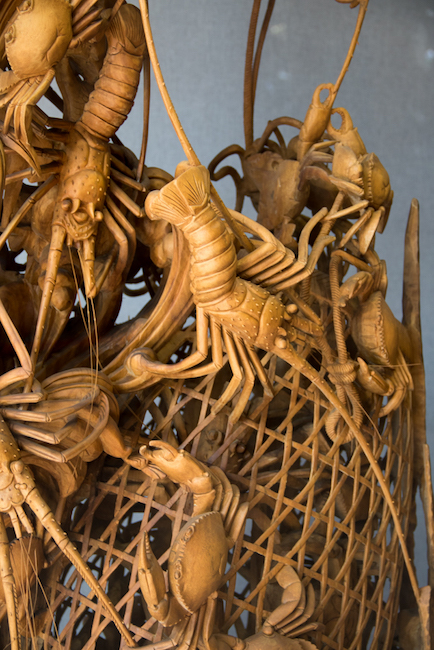
Seriously, how cool is this?
"'Lobster and Crab Cages' is a top-notch product only available from master craftsmen of Chaozhou. This work was created in 1998 by the son and student of Chen Shunqiang, the renowned Chaozhou woodcarver.
This masterpiece is made from a whole piece of camphor wood. Using both openwork and three-dimensional carving techniques the craftsmen have created two cages of different shapes linked by very naturalistic, soft-looking cords. Inside and outside the cages are eighteen lobsters and forty-eight crabs, which are so lifelike that they all seem to be brandishing their claws in numerous ways. In the background are chrysanthemum, water and rock, and the whole composition looks like a picture of the water world." - Sign by Woodcarving
Paper-Cut
All of the artwork in China is intricate. Paper cutting is no exception. In today’s world of laser cutting CNC machines the finely cut paper is perhaps less impressive than it might have been in the Tang dynasty, but it's listed among China's cultural heritage masterpieces.

We were given some paper-cut gifts at our end of year "talent show" that the Chinese classes participated in.
Etched Colored Glass
Etched glass was a surprise to me. I didn't realize China did colored glass and etched glass. Apparently the production of these combines Western and Chinese techniques, but I don't know what those are.
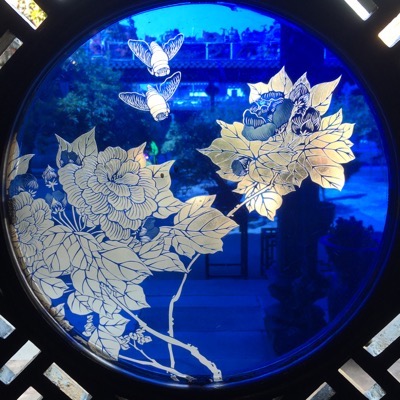

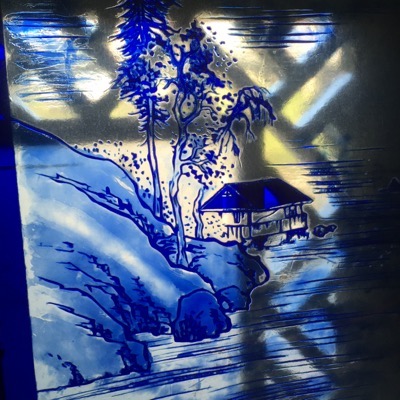
I just don't imagine these ancient style buildings having much glass in them, but the production of these didn't begin until the 19th century.
Porcelain Overly
The texture of the porcelain overlays is outstanding to me. I’ve seen similar art done with shells. Do these chickens not look real?
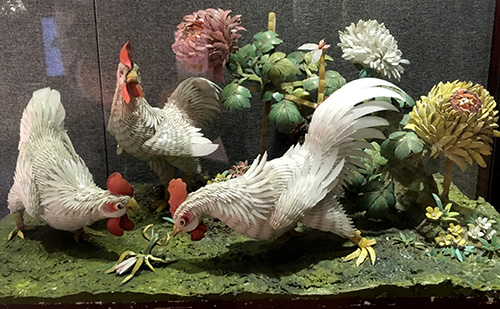
And More
There are displays for Pottery Roof Ornaments, Lacquer Arts, Gold Lacquer, and Copper Engraving. Sorry, if you want to know more about these you'll have to go to the museum yourself. :P Personally I found these a little less impressive and glossed over these since our tour group was on a tight schedule.
China has a very rich culture. As much as they are trying to Westernize, I'm glad they are taking care to preserve their history and art.
